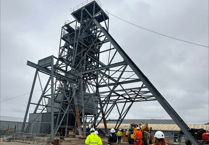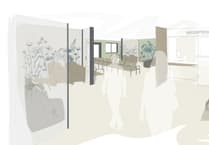AIR investigators have made safety recommendations after an aircraft landed at Cornwall Airport Newquay with deflated tyres.
The Air Accidents Investigation Branch (AAIB) compiled a report after the Beech 400A aircraft veered from the centre of the runaway on landing on October 7, 2022 at 11am.
A combination of weathercocking into the wind and applying left pedal brought the aircraft back to the runway centreline where it came to rest angled about 45° to the left of the centreline, with the mainwheel tyres deflated and the brakes seized.
The two crew and one passenger were evacuated from the plane, which had flown from East Midlands Airport.
The mainwheel tyres were found fully deflated and there was smoke emanating from them, but there was no fire.
The airport fire service was on the scene shortly thereafter.
The AAIB report said: “Prior to the descent, the commander was scanning the flight deck and noticed that the parking brake handle on the lower left side of the instrument panel was not fully pushed in.
“He then realised that the reduced acceleration was probably caused by the parking brake remaining on, with partial brake pressure locked in the system, causing the brakes on the main wheels to remain applied during the takeoff.
“The flight crew briefed for the possibility of loss of tyre pressure on landing.
“The landing gear was lowered early to allow for additional cooling of the brakes, although he realised that this would have no effect if the fuse plugs had already melted.
“The aircraft touched down close to the runway threshold.
“Immediately, the commander noticed the deceleration was greater than normal.
“Reverse thrust and speed brakes were applied, and as the aircraft slowed below about 50 kt the aircraft started to drift towards the right side of the runway.”
The AAIB file investigation report concluded the rapid deceleration on touchdown was caused by either the tyres having already deflated due to the fuse plugs having melted, or the brakes being seized, or a combination of both.
The report stated: “This was the result of the brakes having been heated during the take off run because the parking brake had been left on with partial pressure applied.”
“The lack of a light or caption to indicate that the parking brake is on, or an aural or visual warning that the parking brake is on when takeoff power is applied, may have contributed to the incident, as may have the lack of a ‘release parking brake’ item in the ‘Before Takeoff’ checklist.”
The AAIB recommended that the aircraft manufacturer amend the checklists for the Beech 400 series to include a ‘release parking brake’ item in the ‘before takeoff’ checklist.





Comments
This article has no comments yet. Be the first to leave a comment.